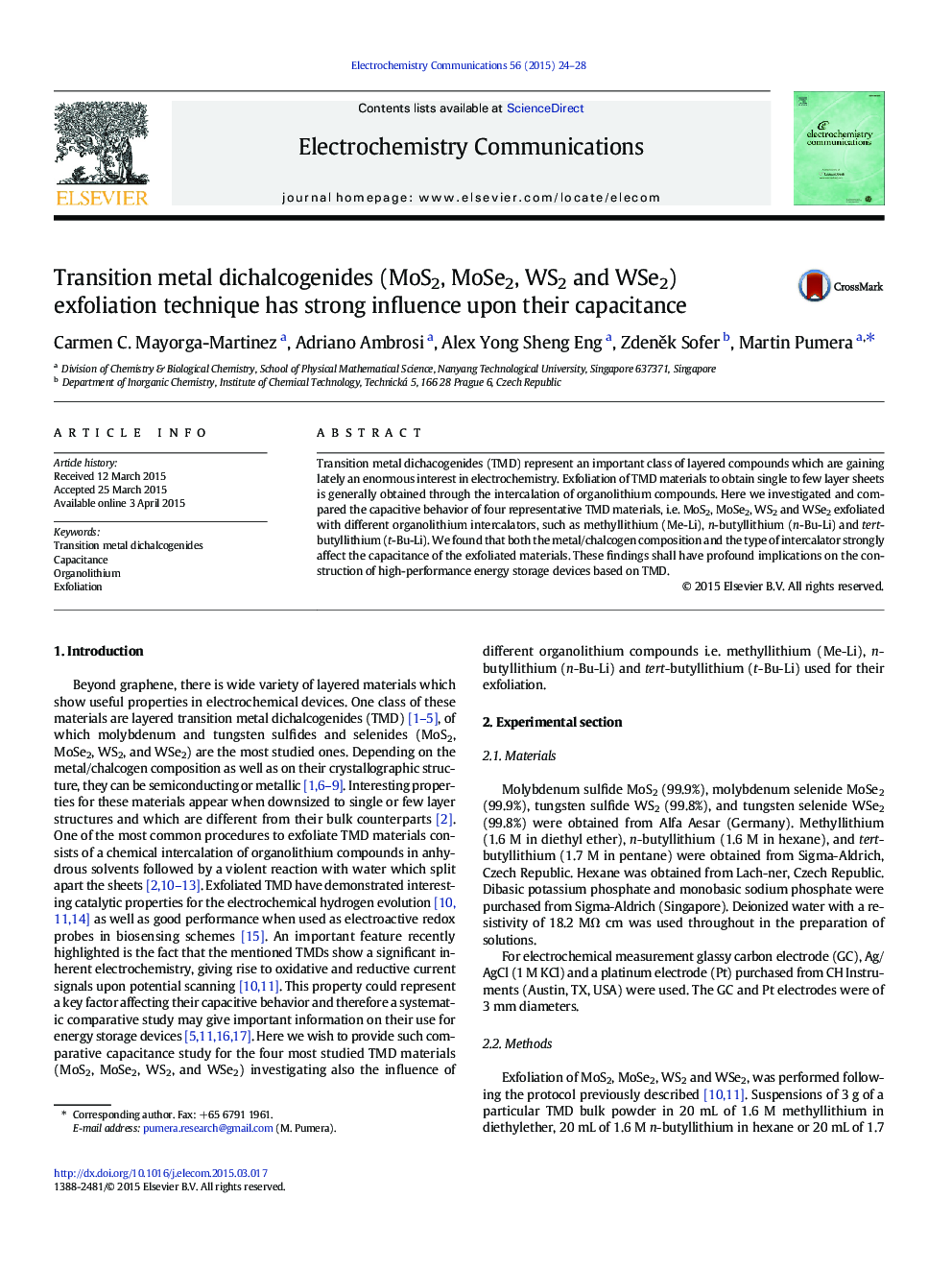| Article ID | Journal | Published Year | Pages | File Type |
|---|---|---|---|---|
| 178900 | Electrochemistry Communications | 2015 | 5 Pages |
•We investigate the capacitive behavior of MoS2, MoSe2, WS2 and WSe2.•These TMDs are obtained using lithium ion intercalation exfoliation process.•WS2tert-butyllithium presents the highest gravimetric capacity.•The metal/chalcogen composition and the intercalator strongly affect the capacitance.
Transition metal dichacogenides (TMD) represent an important class of layered compounds which are gaining lately an enormous interest in electrochemistry. Exfoliation of TMD materials to obtain single to few layer sheets is generally obtained through the intercalation of organolithium compounds. Here we investigated and compared the capacitive behavior of four representative TMD materials, i.e. MoS2, MoSe2, WS2 and WSe2 exfoliated with different organolithium intercalators, such as methyllithium (Me-Li), n-butyllithium (n-Bu-Li) and tert-butyllithium (t-Bu-Li). We found that both the metal/chalcogen composition and the type of intercalator strongly affect the capacitance of the exfoliated materials. These findings shall have profound implications on the construction of high-performance energy storage devices based on TMD.
Graphical abstractFigure optionsDownload full-size imageDownload as PowerPoint slide
